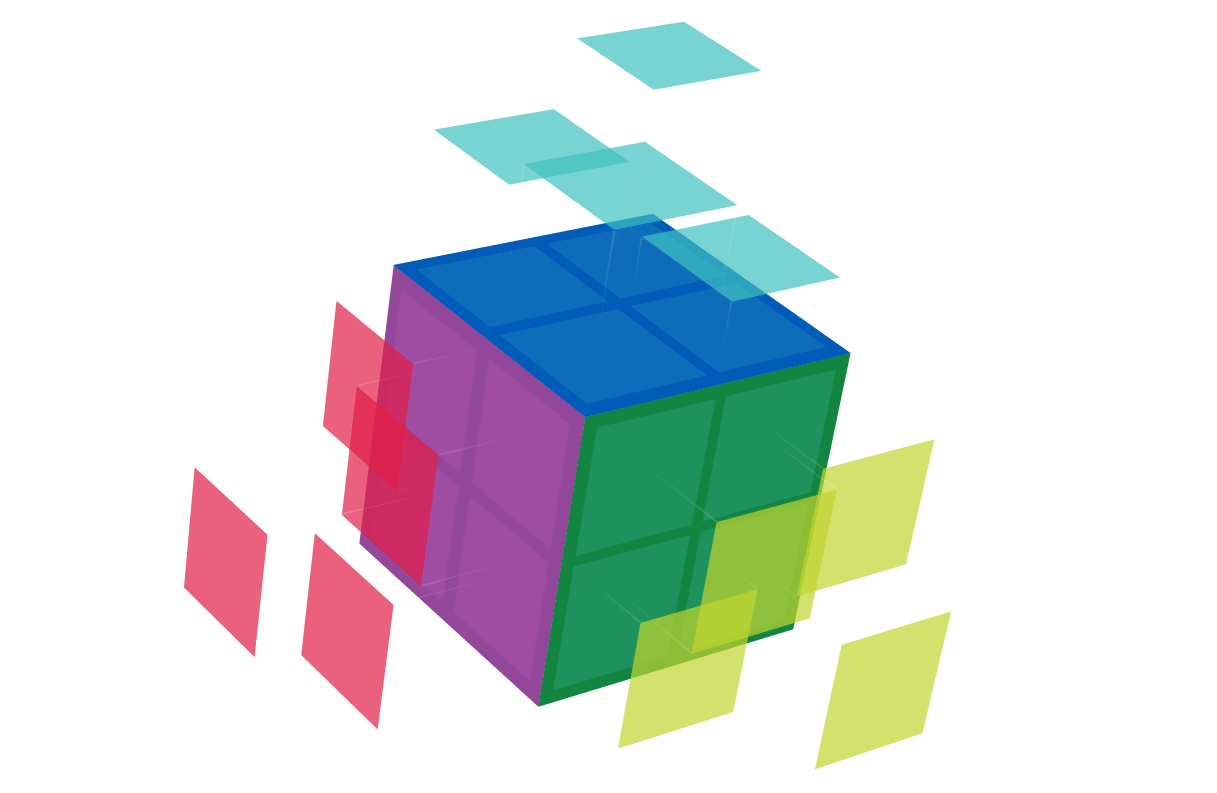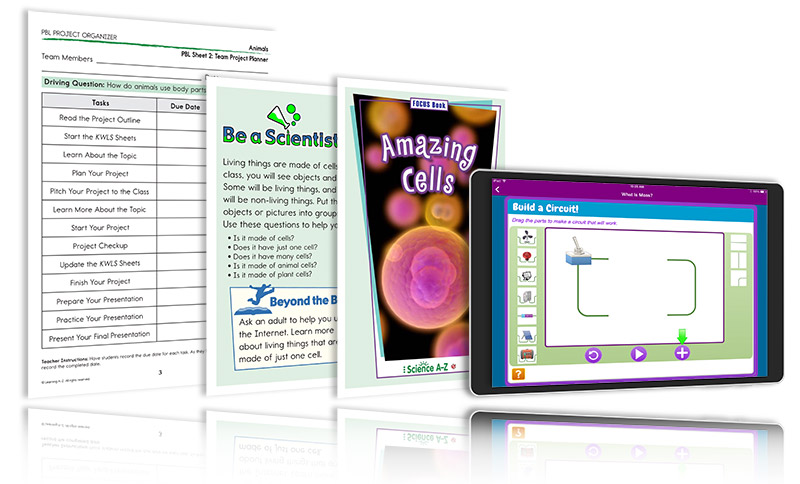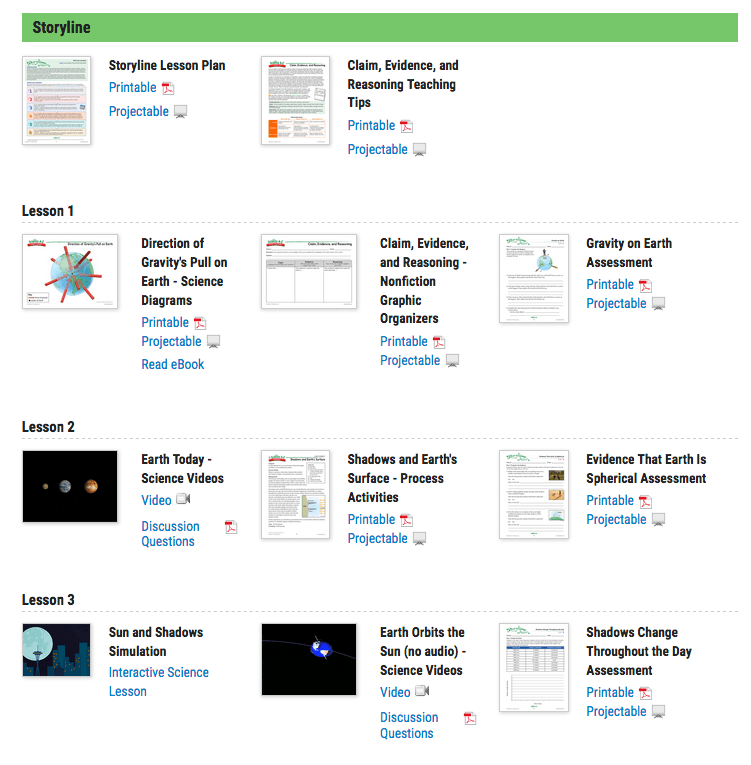At a recent science conference, a colleague of mine was browsing the session catalog and commented, “Wow! 3D printing has become huge! Almost every session mentions 3D.” While there were some actual 3D printers on the exhibit floor, those session summaries actually referred to the three dimensions of the Next Generation Science Standards* (NGSS). And it’s true, they have become huge! Three-dimensional instruction is the biggest idea I can recall taking hold in my 25+ years of experience with science education.
Three-dimensional instruction is the notion that students should develop proficiency in science content knowledge, along with aptitude in the practices used by real scientists and engineers, and a broader understanding of the concepts that span multiple scientific endeavors. Thus, the Disciplinary Core Ideas (DCIs), Science and Engineering Practices (SEPs), and Crosscutting Concepts (CCCs) create an integrated framework through which teachers and curriculum developers can plan for and implement instruction.

How Many Dimensions Do We Need?
Imagine a world of one dimension, length without height or depth: our whole universe would be an impossibly thin, straight line. This is how many of us learned science. Our teacher had a plan to teach us about life cycles or planets or rock types and took us from point A to point B, perhaps by having us read about a science concept in a textbook, then moving on to the next and the next. There must have been some value in this method, because many of today’s brilliant minds flourished despite this limited approach—but it was limited. They must have done something beyond the book to develop their mastery.
Next, imagine a two-dimensional world, perhaps having length and height, but no depth. When I taught upper elementary school, my students did learn science ideas by reading about them, but I mixed in hands-on activities, which were at times detached from the reading. I used whatever resources I could scrounge up and pay for out-of-pocket, and later implemented kits once my district provided them. But it was still a fairly disconnected experience for my students.
Now visualize a three-dimensional world, with length, height, and depth. Yes, students can still learn by reading and by doing, but now those ideas and practices are connected. Students see how the parts of a bicycle, the parts of a plant, and the planets circling the Sun each make up a system. Organisms, water, and even rocks all go through cycles! The ideas students learn about pushes and pulls in kindergarten set them up for success with forces and motion in grades 3 and above.

Navigating the Changing Tides
In twelve years as an editor with Science A-Z, I’ve enjoyed the challenge of helping our own philosophies change in response to the fluid movement of what experts identify as best practices in science education. Serving teachers and students in all 50 states and in many other countries, we’re unable to focus exclusively on NGSS. Some of our customers still want to use the structures of the scientific method and traditional science fairs, for example. Some still place an emphasis on directly teaching the processes of science apart from the content. Many value Science A-Z for the library of printable and online nonfiction texts we add to their literacy program. So we continue to support those approaches.
But with about 20 states officially adopting NGSS and many others adopting a nearly identical set of science standards, all of the new resource collections we’ve published since drafts of A Framework for K-12 Science Education1 were released in 2011 have been designed with three-dimensional learning in mind. In fact, the Teaching Tips that accompany each of these student resources offer an NGSS correlations table. Examples include:
- FOCUS Books: Each book is planned around one or more DCIs, and includes a hands-on, student-directed activity on the back cover (“Be a Scientist!” or “Be an Engineer!”) that allows students to explore science ideas while applying practices. The title page identifies the CCC that the book most closely relates to, such as patterns, cause and effect, or stability and change.
- Project-Based Learning (PBL) Packs: Students work in teams to plan and complete a project that explores key science ideas while they apply practices such as obtaining and communicating information, developing and using models, and designing solutions to problems.
- Interactive Science Lessons: Students work independently at their own pace to complete online lessons that include reading, narration, virtual models, animations, simulations, and quizzes as they explore science ideas and apply practices.
While all of these resources and many others from Science A-Z support 3D learning, some place a higher emphasis on one dimension over another. That’s why customers are so excited about our newest resource collection.

Science A-Z Storylines
Science A-Z Storylines are being built intentionally to blend all three dimensions while preparing students to demonstrate all of the Performance Expectations (PEs) across the K-5 NGSS standards.
Each Storyline is designed to address a bundle of PEs within one topic of the standards at a particular grade level. The Storyline Lesson Plan is an integrated series of lessons in which students make sense of phenomena and design solutions to problems. Supporting resources require reading, writing, collaboration, and investigation. Assessments allow teachers to gauge student mastery of core ideas and concepts, as well as their ability to apply the targeted practices. In 2018, we launched with six Storylines—one at each elementary grade—and we’re working hard to create Storylines for the 15 remaining NGSS topics at these grade levels. We also have plans to deliver Storyline resources directly to students through the Kids A-Z website.
The Fourth Dimension
I remember watching the legendary Carl Sagan on his Cosmos TV series as he modeled the three physical dimensions, along with speculation on what a fourth dimension might look like. In science education, the fourth dimension is: YOU! The classroom teacher, specialist, or curriculum director who helps students explore the other three dimensions: DCIs, SEPs, and CCCs.
Teaching remains an art, perhaps more now than ever. At Science A-Z, it’s our job to equip you with high-quality instructional materials to help your students think and act like scientists and engineers, and make connections across subject areas and across their years of schooling.
Want access to all the amazing resources that Science A-Z offers?
Start your free 2-week trial today!
1 National Research Council. (2012). A Framework for K-12 Science Education: Practices, Crosscutting Concepts, and Core Ideas. National Academies Press.
* Next Generation Science Standards is a registered trademark of Achieve. Neither Achieve nor the lead states and partners that developed the Next Generation Science Standards was involved in the production of, and does not endorse, this product.


